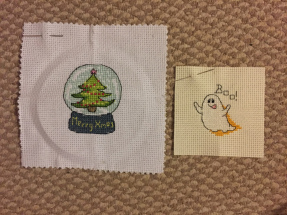
You see the terms heirloom, hybrid, and GMO tossed about quite a bit in gardening catalogs, garden publications, and elsewhere within the mass media. These topics are discussed and debated, but are often misunderstood by the general public. In an effort to clear up this misunderstanding, I’m going to define exactly what these terms mean.
Plants that are labeled as heirloom, or pure strain, are plants that “breed true.” Seeds produced from these plants will produce new plants that will be very similar to the parent plant. However, these plants must be pollinated by the exact same cultivar in order to keep the genetics pure. Example: a Brandywine tomato plant is a pure strain cultivar of tomato plant. Seeds from the fruit of Brandywine plants will produce a new generation of Brandywine tomatoes, and the plants and fruit will closely resemble that of the Brandywine tomato from whence those seeds came. The term heirloom also refers to the fact that the cultivar is often passed down through generations of families or communities, just like passing down furniture or jewelry. The term open-pollinated is sometimes used to describe an heirloom or pure-strain cultivar, but this can be misleading. Technically, an open-pollinated plant is one where pollen is transferred from flower to flower via wind, insects, birds, humans, or other natural means. This might result in pollen being transferred within the same cultivar, but it could also involve cross-pollination with another cultivar, resulting in mixed-genetics or hybrid offspring. All heirloom cultivars are open-pollinated, but not all open-pollinated cultivars are heirloom.
Hybrid cultivars are plants that have been created by cross-pollination – putting the pollen from one cultivar on the flower of a different one. This can occur randomly in nature, but is usually done by human beings under controlled conditions. Example: the Brandy Boy tomato cultivar was created by crossing the Brandywine cultivar with the Better Boy cultivar. Hybridization often results in a stronger, higher yielding plant that can have the best of both worlds of the parent plants. The Brandy Boy tomato has all of the flavor of the Brandywine combined with the disease resistance of the Better Boy. However, the genetics of the Brandy Boy are not pure, this the seeds cannot be saved from generation to generation. If you were to try to save and plant the seeds from a Brandy Boy, the resulting plant and fruits would not look like the parent. The taste might also be different and the disease resistance less vigorous than expected.
Genetically Modified Organisms or GMO’s are living entities (plants or animals) that have had their genetic material altered in some way. Here is where the semantics gets tricky. The very act of cross-pollinating one plant with another is a form of genetic modification. This is a perfectly natural process, whether it occurs in nature or by humans. The resulting plants, fruits, and vegetables are perfectly natural, and excepting minor genetic differences, are no different from their pure strain counterparts. A Brandywine and a Brandy Boy tomato in the end are still tomatoes, and at the cellular level, still contain tomato DNA. Genetically engineered organisms, on the other hand, are living entities that have had their genetic structure altered in the laboratory. Example: inserting genes from a fish into the genetic structure of a tomato would result in a tomato plant that has both tomato and fish DNA. This does not occur naturally, and it is this form of genetic modification that has many people up in arms.
I am not going to debate the merits and detriments of genetic engineering. That’s a whole other topic that’s outside the scope and intent of this article. My intent here is to clarify what all of these terms mean so that when you do get into debates about them, you can make sure that you are clear on the meaning of what you are debating. Whether you are for or against doing anything with genetics, remember that all genetic engineering is genetic modification, but not all genetic modification is genetic engineering. If you grow a hybrid plant you are growing a GMO. But this is not the same as the GMO that is often denounced as “Frankenfood.” That is the result of genetic engineering, an entirely different kind of GMO.
I hope I’ve succeeded in clearing up any misconceptions you may have had regarding these terms.
Advertisements Share this:




